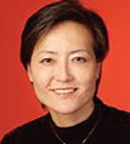
Patients can respond in one lesion and not in another. It depends on where you sample.— Youn Kim, MD
Tweet this quote
Commenting on this talk during the discussion afterward, Youn Kim, MD, of Stanford University School of Medicine, Stanford, California, said: “At our center, we use high-throughput sequencing of T-cell receptors daily in patients with cutaneous T-cell lymphomas, and it is a billable service paid by the insurance company. At Stanford, the high-throughput sequencing method has replaced standard polymerase chain reaction methods for molecular diagnosis. We also use it for posttransplant minimal residual disease monitoring in patients with cutaneous T-cell lymphomas as well.”
Dr. Kim cautioned that just because one skin lesion has no malignant clone, that may not mean the patient is in remission. “Patients can respond in one lesion and not in another,” she said. “It depends on where you sample.”■
Disclosure: Dr. Kim reported no potential conflicts of interest.

